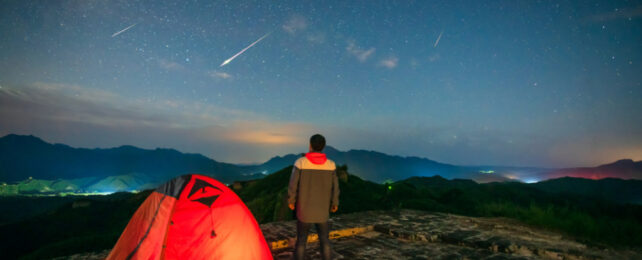Annually, between July 17 and August 24, the Perseid meteor shower puts on one of the brightest cosmic events of the year.
This year the meteor shower is predicted to reach its peak on the night of August 13, as Earth passes through the densest part of the Comet 109/Swift-Tuttle's trail.
What is the Perseid meteor shower?
The meteor shower is made up of particles that crumbled away from the 16-mile (26-kilometre) wide comet as it zooms in and out of the inner Solar System.
Comet Swift-Tuttle last ventured into our neighborhood in 1992 and will next swing by in 2126, but it's dusty trail is still lingering and the debris is capable of putting on a beautiful display as it burns up in our atmosphere as Earth passes through.
The tails of the meteors all seem to point to the northern hemisphere constellation Perseus, which is why the event is called the Perseid meteor shower.
During the meteor shower's peak, skywatchers in the northern hemisphere can expect to see up to 60 to 70 shooting stars per hour, provided they've found some dark, clear skies for viewing.
The 2016 shower was a doozy, with closer to 200 meteors per hour lighting up the sky thanks to Jupiter tugging at the comet's dust trail, allowing Earth to slip deeper into the stream.
When will the Perseids meteor shower peak?
This year, the peak of the shower will occur on August 13, when the Moon will be a dim waning crescent and only around 7 percent illuminated – so it should be great conditions for stargazing.
For skywatchers in the Northern Hemisphere, the meteor shower is often at its best during the early pre-dawn hours.
How and where to watch the Perseids meteor shower
Remember it takes your eyes about 30 minutes to fully adjust to the dark, and don't worry about acquiring any fancy equipment - you'll be able to see everything easily with the naked eye, especially if you can get out of the city and away from the smog and light pollution.
You can help find a dark enough spot near you, using this atlas of artificial sky brightness.
Unfortunately the event is below the horizon for those in most parts of the Southern Hemisphere.
An earlier version of this article was published in 2017.
